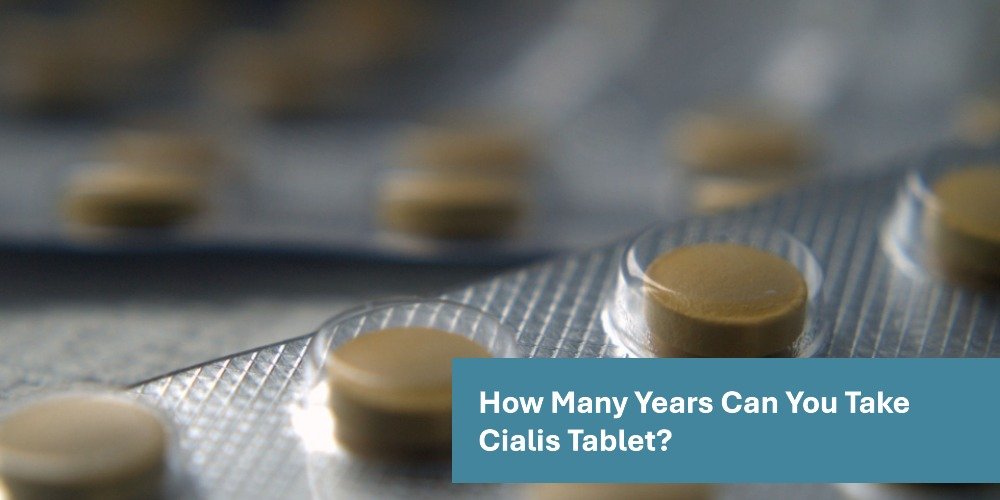You can take Cialis (tadalafil) tablets for many years if prescribed safely, but the steps of safe use include medical evaluation, correct dosage, regular monitoring, and lifestyle management.
Detailed Explanation
When you start Cialis, the first step is a medical evaluation, where your doctor checks your heart, blood pressure, and overall health to confirm if long-term use is safe. The next step is correct dosage, usually 2.5 mg to cialis 20 mg, depending on whether you take it daily or as needed.
After that comes regular monitoring, where you should check in with your doctor at least once a year to track side effects, kidney function, and cardiovascular health. The last step is lifestyle management, because factors like smoking, alcohol use, and diet can affect how well Cialis works and how long you can safely continue it.
Are There Any Side Effects That Can Develop With Long-Term Cialis (Tadalafil) Treatment?
Yes, long-term Cialis (tadalafil) treatment can lead to side effects such as headache, indigestion, back pain, muscle aches, flushing, and nasal congestion, though these are usually mild and temporary.
Explanation
Clinical trials like the Porst 2008 study and Eardley 2010 extension trial followed men taking tadalafil for up to 24 months. They found the most reported long-term side effects were headache (up to 15%), dyspepsia or indigestion (about 10%), back pain (5–6%), muscle aches (4–5%), flushing (3%), and nasal congestion (3%). Importantly, these effects tended to lessen over time as your body adjusted. Serious side effects such as vision changes or sudden hearing loss are very rare, and long-term use showed no evidence of organ damage to the heart, liver, or kidneys.
What Studies Have Been Done on the Long-Term Effects of Cialis (Tadalafil) Use?
Several key studies, including the Montorsi 2004 study, Porst 2008 study, and Eardley 2010 extension trial, have examined the long-term effects of Cialis (tadalafil) use, showing it is safe and effective for continuous treatment over periods of up to 2 years.
In the Montorsi 2004 study, tadalafil was tested for 18–24 months in men with erectile dysfunction, and the results confirmed stable effectiveness with no new safety risks. The Porst 2008 study further showed that men using tadalafil daily (2.5–5 mg) for up to 2 years maintained improved erectile function with minimal side effects such as headache and dyspepsia. The Eardley 2010 extension trial reinforced these findings, reporting that over 1,000 men tolerated tadalafil well for 24 months, with no evidence of long-term harm to the heart, liver, or kidneys.
What are the Recommendations for Using the Cialis Tablet Long-term?
The main recommendations for long-term Cialis (tadalafil) use are to start with a medical evaluation, follow the correct dose, monitor regularly, and manage lifestyle factors to ensure safety and effectiveness.
Before starting, you need a medical evaluation to check heart health, blood pressure, and possible drug interactions, since tadalafil affects blood vessels. The correct dose depends on your needs: 2.5 mg to cialis 5 mg daily for ongoing treatment, or 10 mg to 20 mg as needed. Long-term users should have regular monitoring (at least once a year) for cardiovascular health, kidney and liver function, and any side effects. Finally, lifestyle management is important, limiting alcohol, avoiding nitrates, stopping smoking, and maintaining a balanced diet, which improves both safety and results.
How Do I Know If Cialis is Right For Me?
You know if Cialis (tadalafil) is right for you by considering your medical history, current health conditions, other medications, and treatment goals, all reviewed with a doctor.
Explanation
The first step is medical history, where your doctor checks for heart disease, uncontrolled blood pressure, recent stroke, or use of nitrate medicines, since Cialis can interact with these. The next step is your current health conditions. If you have diabetes, benign prostatic hyperplasia (BPH), or erectile dysfunction, tadalafil has been proven effective in clinical studies for improving both urinary symptoms and erectile function.
Then come other medications, because drugs such as nitrates, alpha-blockers, or certain antifungals can cause dangerous interactions with Cialis. Finally, your treatment goals matter: you can use it as a daily low dose (2.5–5 mg) for ongoing support or as a higher on-demand dose (10–20 mg) for occasional use, depending on what fits your lifestyle.

